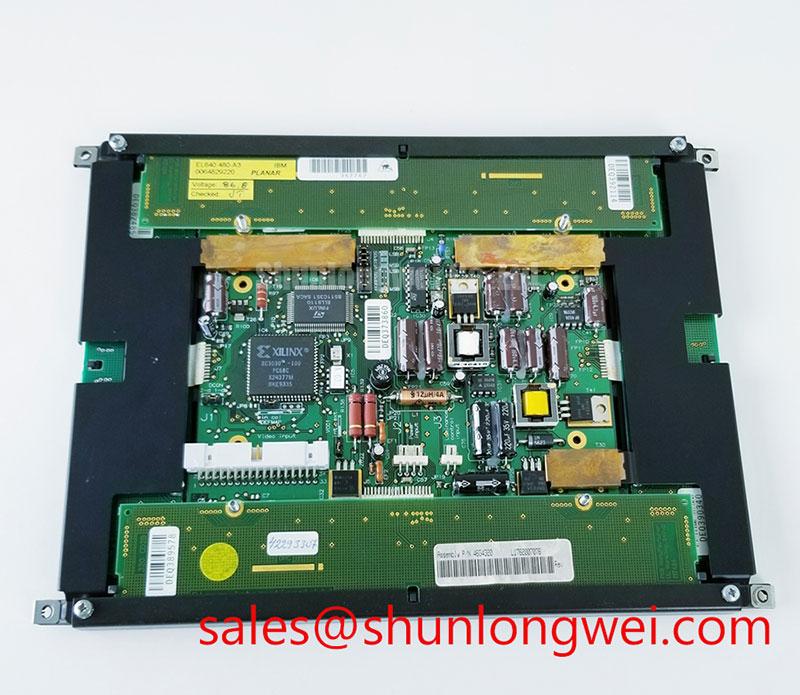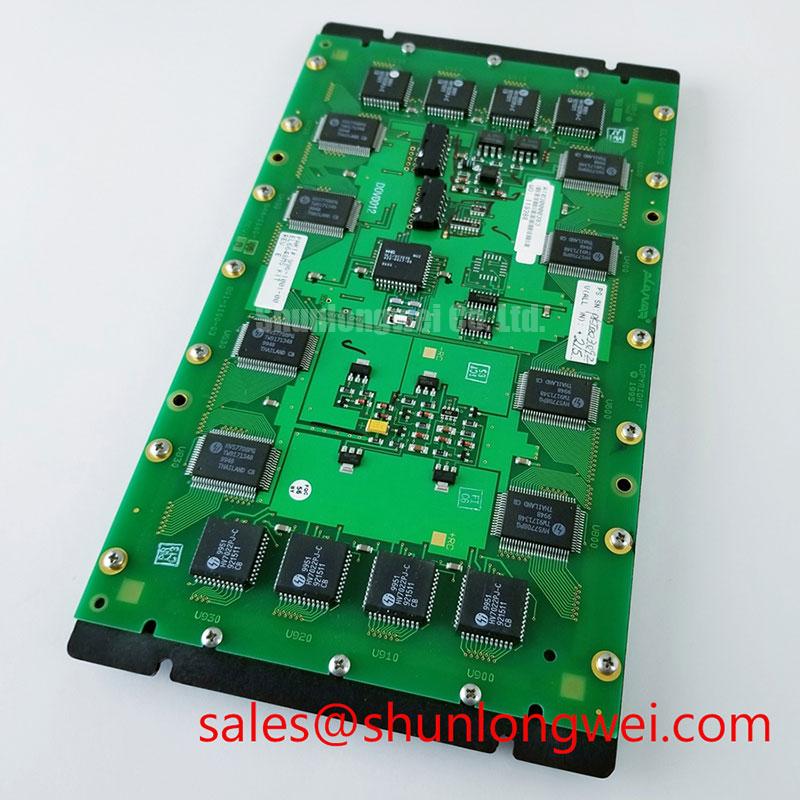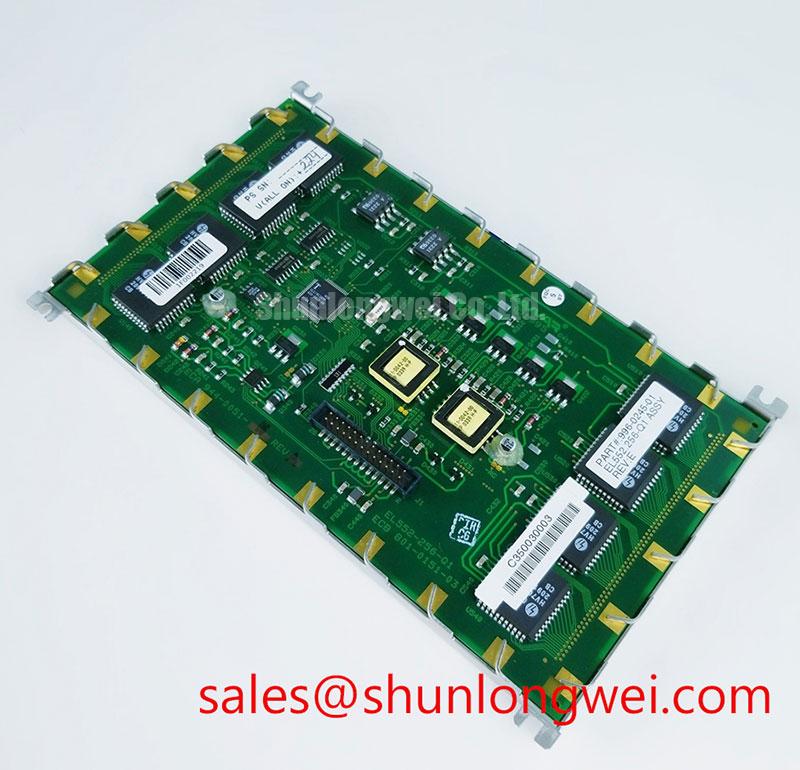Content last revised on November 8, 2025
EL640.480-A3: High-Performance VGA Electroluminescent Display
Introduction & Key Highlights
The EL640.480-A3 is a high-reliability Electroluminescent (EL) display engineered for mission-critical applications that demand absolute clarity and operational stability in extreme environments. Delivering a crisp 640x480 VGA resolution on a 10.2-inch diagonal screen, its core value lies in its solid-state reliability and exceptional visual performance under challenging conditions. Key benefits include an ultra-fast response time and a wide, stable viewing angle. This display directly addresses the need for a rugged, long-life visual interface that remains perfectly legible from freezing temperatures to high heat. For industrial HMI systems facing extreme temperature swings, the EL640.480-A3 provides an optimal balance of performance and proven durability.
Key Parameter Overview
Decoding the Specs for Environmental Resilience and Performance
The technical specifications of the EL640.480-A3 underscore its suitability for demanding industrial, medical, and instrumentation applications. Unlike conventional LCDs, its performance parameters remain remarkably consistent across its entire operating range. This table highlights the key metrics that enable its robust performance.
| Parameter | Specification | Engineering Value & Interpretation |
|---|---|---|
| Display Technology | Thin Film Electroluminescence (TFEL) | Solid-state design with no liquid crystals ensures inherent resistance to shock and vibration, eliminating the risk of screen freezing or pressure point failures common in harsh environments. |
| Resolution | 640 x 480 (VGA) | Provides a standard, widely supported resolution suitable for displaying critical data, graphical user interfaces (GUIs), and complex schematics with clarity. |
| Active Area | 206.4 mm x 154.8 mm | Offers a substantial 10.2-inch diagonal viewing area, ensuring data is easily readable from a distance, which is crucial for control panels and monitoring stations. |
| Response Time | < 1 ms | Imagine trying to read a moving gauge on a slow display; the numbers would blur. With a response time under 1 millisecond, this display renders motion without any ghosting or blurring, ensuring immediate readability for dynamic data. |
| Viewing Angle | > 160° (Typically 179°) | Enables multiple operators to view the screen from different positions—even far off to the side—without any color shift or loss of contrast. This is critical for collaborative environments like control rooms or medical operating theaters. |
| Interface | 4-bit Parallel Data | Provides a straightforward, robust digital interface commonly used in embedded systems, facilitating direct integration with a wide range of industrial controllers and single-board computers. |
Download the EL640.480-A3 datasheet for detailed specifications and performance curves.
Application Scenarios & Value
Delivering Uncompromised Clarity in Demanding Field Operations
The EL640.480-A3 excels in environments where standard displays falter. Its core value is realized in applications that require unwavering readability and reliability despite environmental stress. The solid-state nature of its TFEL technology makes it an ideal fit for systems where uptime is non-negotiable.
A high-fidelity engineering scenario is its deployment in the operator cab of heavy construction or mining equipment. In this setting, the display faces a dual challenge: extreme temperature fluctuations and constant, high-amplitude vibration. A conventional LCD might suffer from slow response times in the cold or become unreadable due to vibration-induced failures. The EL640.480-A3's sub-1ms response time remains constant whether at -40°C or +85°C, ensuring that critical machinery diagnostics and control feedback are displayed instantly and without motion blur. This instant-on capability and consistent performance directly enhance operator safety and operational efficiency by providing reliable, real-time data under all conditions.
- Industrial Automation & Process Control: Perfect for HMIs in manufacturing plants, steel mills, and chemical processing facilities where temperature extremes and mechanical shock are prevalent.
- Medical Instrumentation: Used in diagnostic and monitoring equipment that requires high-contrast, blur-free data visualization and long-term reliability.
- Transportation and Avionics: Suitable for vehicle-mounted displays in rail, marine, and specialty vehicles, as well as in certain ground-based aviation support equipment.
- Test & Measurement Equipment: Provides a rugged and clear user interface for portable or benchtop devices used in field service and laboratory settings.
FAQ
Engineering Questions on the EL640.480-A3
What is the primary advantage of TFEL technology over a standard industrial TFT-LCD?
The primary advantage is environmental resilience. Thin Film Electroluminescent (TFEL) technology is solid-state, containing no liquid. This makes the EL640.480-A3 inherently immune to issues like freezing, pressure sensitivity, and limited viewing angles at extreme temperatures, which can compromise the performance of liquid-crystal-based displays.
How does the < 1 ms response time impact usability in a control system?
An ultra-fast response time ensures that rapidly changing data, such as pressure alerts, motor speed, or waveform monitoring, is displayed without any smearing or "ghosting." This allows an operator to make faster, more accurate decisions based on real-time information, which is a critical safety and efficiency factor in process control systems.
Is the 4-bit parallel interface difficult to integrate with modern microcontrollers?
While many modern systems use serial interfaces like LVDS or HDMI, the 4-bit parallel interface of the EL640.480-A3 is a well-documented and robust standard in the embedded world. It often allows for more direct connection to the I/O pins of industrial-grade microcontrollers and FPGAs, potentially simplifying the driver circuitry and reducing latency for certain control applications.
What does the >160-degree viewing angle mean in a practical application?
It means the displayed information remains clear and readable even when viewed from extreme angles—up, down, left, or right. In a busy control room or a medical operating suite where multiple people need to see the same screen from different positions, this wide viewing cone ensures everyone sees the same high-contrast image without having to be directly in front of the display.
How does the display maintain its contrast in high ambient light?
Electroluminescent displays are emissive, meaning each pixel generates its own light against a dark background. This inherently creates high contrast. The EL640.480-A3 often incorporates technologies that enhance this further, providing superior readability compared to many reflective or transmissive LCDs when faced with challenging lighting conditions, a key requirement for military-grade hardware and outdoor-viewable HMIs.
Technical Deep Dive
The Engineering Behind Solid-State Reliability
The exceptional durability of the EL640.480-A3 is rooted in its fundamental TFEL construction. Unlike TFT-LCD panels that rely on a layer of liquid crystal, a backlight, polarizers, and filters, an EL panel is a much simpler, solid-state device. It consists of a luminescent phosphor layer sandwiched between dielectric layers and a matrix of transparent and dark electrodes. When voltage is applied to an intersection of a row and column electrode, the phosphor at that pixel location emits light directly.
This "light-on-demand" approach at each pixel yields several critical engineering advantages. First, the absence of a liquid layer makes it impervious to freezing or boiling, which is why its operational temperature range is so vast. Second, with fewer layers and no moving internal parts, the structure is inherently resistant to mechanical shock and vibration. Think of it like a solid-state drive (SSD) versus a hard disk drive (HDD); the former has no moving parts and is far more durable. This solid-state architecture is the reason the EL640.480-A3 can withstand harsh mechanical stress that would permanently damage an LCD screen.
Application Vignette
Enhancing Safety and Uptime in Port Crane Operations
Consider the challenge of designing a human-machine interface (HMI) for a container crane at a major seaport. The operator's cab is exposed to punishing conditions: direct sunlight causing glare, winter temperatures dropping well below freezing, and constant vibration from the machinery. The HMI must provide flawless, real-time data on load weight, boom position, and safety alerts.
Here, the EL640.480-A3 provides a definitive solution. Its emissive display technology delivers high contrast that remains readable even in bright, indirect sunlight. On a frigid morning, the display turns on instantly to full performance, while a standard LCD might require a heater and warm-up time, causing costly delays. The VGA resolution is perfectly matched for displaying critical operational graphics and text with excellent clarity. Most importantly, its proven resilience to shock and vibration ensures that the connection between the operator and the multi-million-dollar machine is never compromised, directly contributing to a safer and more productive work environment.
An Engineer's Perspective on Legacy and Future-Proofing
The EL640.480-A3 represents a class of components built for longevity, not just in terms of operational hours but also in system relevance. Its standard VGA resolution and robust parallel interface ensure it can serve as a drop-in replacement for aging displays in critical long-life systems, from military hardware to industrial process controllers. For engineers designing new systems for the world's toughest environments, this display provides a proven, low-risk solution that prioritizes uptime and data integrity above all else. It's a testament to the principle that for certain applications, the most reliable technology is the most advanced one.













